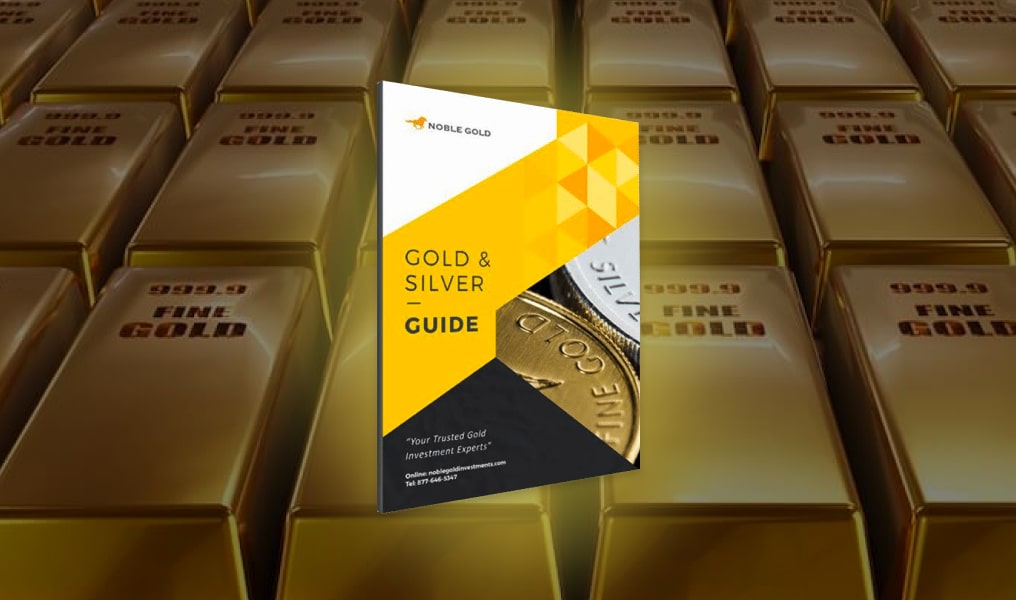Whenever the U.S. economy starts getting close to the debt ceiling, there is always some excitement in the financial markets and uncertainty among investors. While policymakers debate how to handle it, investors wonder if their assets will perform well when the time comes.
Ultimately, reaching the debt ceiling isn’t ideal for the economy or for an investor’s portfolio. However, knowing how certain asset classes like gold and silver might react can help you prepare for any potential consequences.
What Is The U.S. Debt Ceiling?
The debt ceiling is the limit set by the U.S. Congress up to which the U.S. Treasury can borrow to finance government operations such as social services, military spending, and infrastructure projects.
It has been adjusted several times since its inception in 1917 – most recently in 2019, when Congress raised it to nearly $22 trillion.
Why The Debt Ceiling Limit Is Raised
This limit is usually raised when Congress establishes a budget that requires more funding than previous budgets so that the Treasury can borrow more money from lenders if needed. However, if it’s not raised, the U.S. won’t be able to continue to borrow, resulting in an inability to pay bills or service existing debt.
In that case, it would become difficult for the government to meet its obligations, such as paying salaries and other expenses, without resorting to emergency measures such as printing more bills or imposing taxes on citizens. These drastic measures could ultimately lead to inflationary economic pressures.
The U.S. Debt Ceiling’s Impact On Gold And Silver Prices
Before the debt ceiling is hit, Congress must pass legislation to either raise or suspend the limit so that more borrowing can occur. This creates great uncertainty in the financial markets, as investors fear that the government won’t be able to meet its borrowing and other obligations if it isn’t raised.
As a result, many investors are turning to gold and silver as safe-haven assets because they’re stable during times of economic turmoil and uncertainty. This drives up precious metals prices significantly compared to more volatile investments such as stocks or bonds.
Hitting The Debt Ceiling In 2011
Because Congress could not reach an agreement on budget cuts and tax increases, the U.S. Treasury had to take emergency measures to avoid exceeding the $14.3 trillion debt ceiling, such as suspending investments in federal employee pension funds, which Congress reinstated in 2013.
As a result, there was a partial government shutdown that lasted over two weeks, with businesses losing billions of dollars and workers experiencing pay cuts and layoffs. In addition, the U.S. credit rating was downgraded from its previous status of AAA due to policymakers’ lack of fiscal discipline.
With stock prices dropping significantly during this time and many investors selling their stocks in fear of further losses, gold and silver prices experienced an increase as investors sought out safe-haven assets. Gold prices surged by over 25%, reaching an all-time high of over $1,900 per ounce, while silver prices went up by nearly 40%.
How Are Gold And Silver Impacted?
Gold gets its value from its limited supply and steady demand, making it a popular choice for investors looking to protect their wealth over long periods of time.
A Hedge Against Inflation
Gold has long been used as a hedge against inflation because it’s not affected by stock market fluctuations or government policies, making it a reliable option for long-term wealth preservation. The price of silver often moves in tandem with the price of gold, so investing in both currencies offers additional diversification benefits.
Unlike paper money, which can be printed unlimited times, the supply of these precious metals is limited and cannot be artificially inflated. Investors who purchase physical gold and silver coins or bars own something tangible that generally retains its value regardless of market conditions.
Safe-Haven Asset Classes
Gold and silver are considered safe-haven assets because they can help protect against economic uncertainty and inflationary pressures. As the U.S. approaches the debt ceiling, it may be a good time to invest in gold and silver as they can provide more stability than traditional stocks or bonds.
Gold has historically held its purchasing power over long periods of time, while silver is an affordable precious metal with a low correlation to other asset classes. Investing in these precious metals during these times can give investors the peace of mind that their assets can be protected from potential instability in the economy or markets.
Highly Liquid Investments
Gold and silver are highly liquid assets that can be quickly converted into cash. This is a great asset for investors who want to diversify their portfolio while having access to emergency funds.
Tax-Advantaged Assets
Investments in gold and silver can provide several tax benefits. Any income or gains from investments in gold and silver aren’t taxed until the funds are withdrawn, allowing investors to defer taxes on their investment gains.
Withdrawals are tax-free when an investor withdraws funds for qualified retirement expenses, making these investments an attractive option for those who want to maximize their returns while minimizing their taxable income.
Prepare For Economic Uncertainty With Precious Metals
With the United States debt ceiling looming closer, many investors are starting to shift their assets to gold and silver. If you’d like to learn more about investing in physical gold and silver, or are looking for a tax-advantaged approach in a gold-backed IRA, our team is standing by to take your call and discuss your options.
Call SpaceXgold today at 877-646-5347 to speak to a member of our team.






